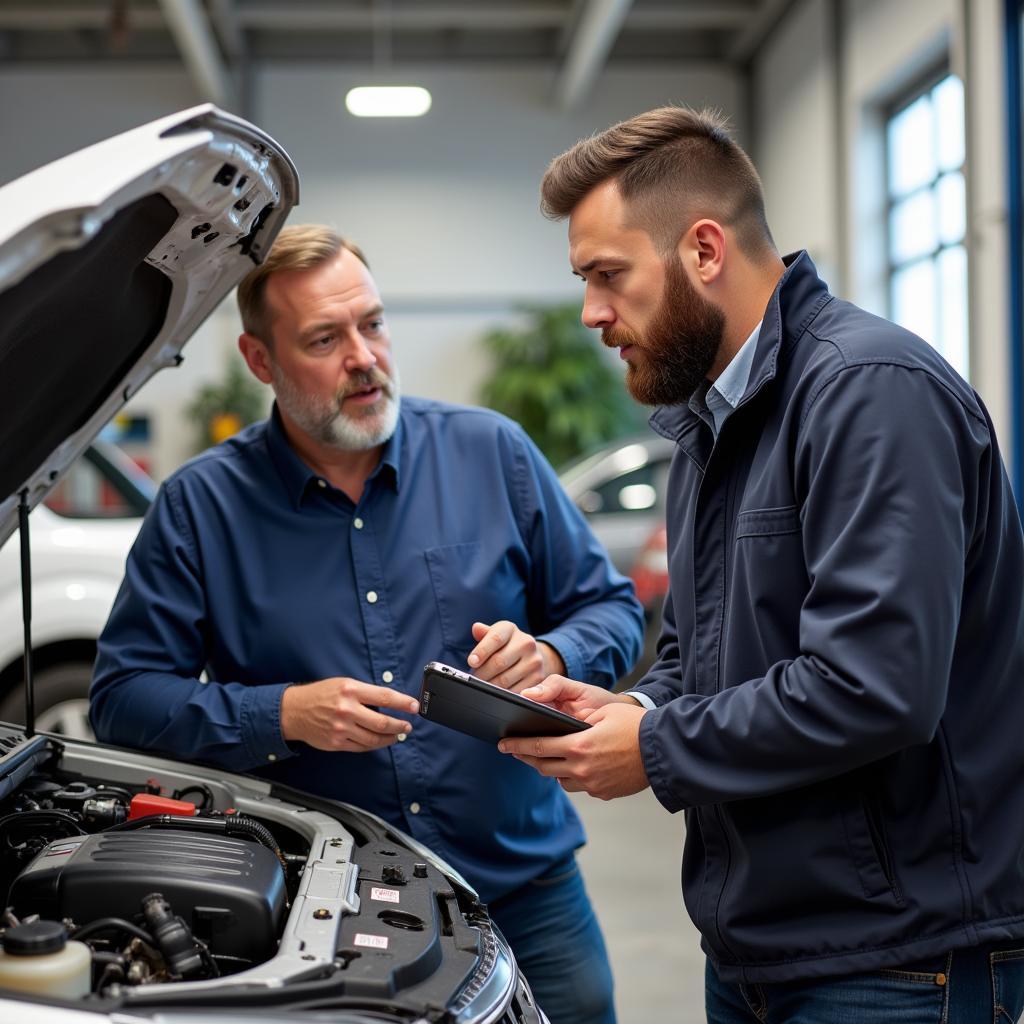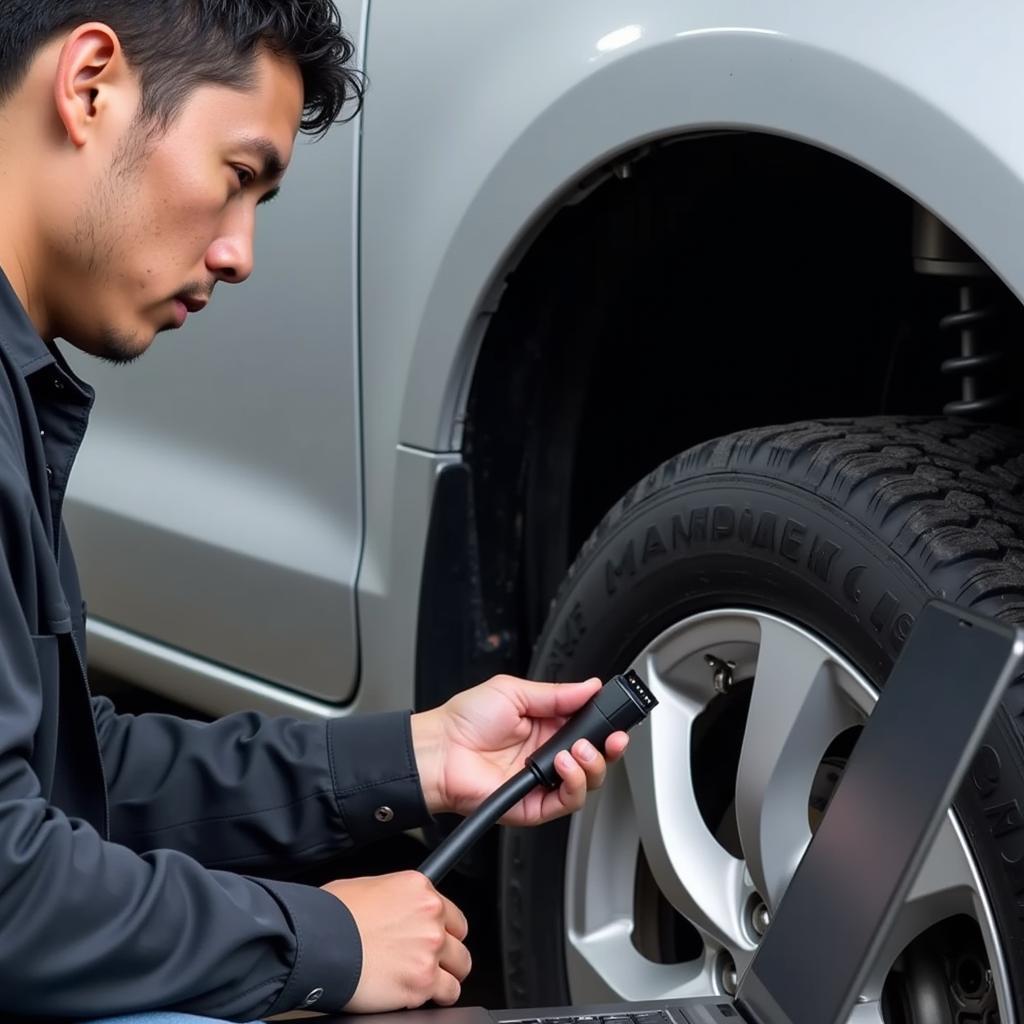The “willingness to listen” diagnostic tool isn’t about a fancy piece of hardware. It’s about a fundamental shift in how we approach automotive diagnostics. It’s about recognizing that sometimes, the best diagnostic tool is a keen ear and an open mind. By truly listening – to the car, to the customer, and even to our own intuition – we can unlock diagnostic insights that might otherwise remain hidden.
Why Your “Willingness to Listen” is Crucial
In today’s world of complex automotive systems and sophisticated diagnostic software, it’s easy to get lost in data streams and forget the basics. We plug in our scanners, run codes, and chase symptoms, often overlooking the valuable information available through simple observation and communication. A customer’s description of a problem, however vague it might seem, can offer crucial clues. The subtle whirring sound emanating from under the hood, barely audible over the engine’s hum, can point towards a failing component. Developing a “willingness to listen” is about honing these observational skills and valuing the often-overlooked information sources.
The Art of Listening to Your Customer
Customers may not speak the language of mechanics, but they are the experts on their own vehicles. They know how their car usually feels, sounds, and performs. Take the time to truly listen to their descriptions. Ask open-ended questions like, “Can you describe the noise you’re hearing?” or “When did you first notice this issue?” Don’t interrupt or dismiss their concerns. Sometimes, the most seemingly irrelevant detail can lead to a breakthrough.
 Customer Describing Car Problem to Mechanic
Customer Describing Car Problem to Mechanic
Listening to the Vehicle: Beyond the OBD-II Scanner
While OBD-II scanners are invaluable tools, they don’t tell the whole story. A “willingness to listen” involves engaging all your senses. Look for visual clues: fluid leaks, worn components, or loose connections. Listen for unusual noises: clicks, whines, or grinding sounds. Even smell can be diagnostic: the distinct odor of burning oil or coolant can pinpoint a problem area.
Honing Your “Willingness to Listen” with the Right Diagnostic Tools
Of course, sophisticated diagnostic tools still play a vital role. Using a high-quality scan tool, such as those offered by ScanToolUS, can provide the data you need to confirm your suspicions and pinpoint the root cause of a problem. But remember, these tools are most effective when used in conjunction with your “willingness to listen.”
The “Willingness to Listen” Diagnostic Tool: A Step-by-Step Guide
- Engage with the customer: Ask open-ended questions and actively listen to their responses.
- Conduct a thorough visual inspection: Look for any obvious signs of damage or wear.
- Listen to the vehicle: Pay attention to any unusual noises or smells.
- Use your diagnostic tools: Employ a scan tool to gather data and confirm your suspicions.
- Analyze the data: Combine the information gathered from the customer, your observations, and the diagnostic tools.
- Formulate a diagnosis: Based on all the information gathered, develop a comprehensive diagnosis.
“The ‘willingness to listen’ isn’t just about being polite; it’s about gathering crucial information that often gets overlooked,” says John Miller, Senior Automotive Diagnostic Technician at Miller’s Auto Repair. “It’s the first step in accurate and efficient troubleshooting.”
Benefits of the “Willingness to Listen” Approach
- Improved diagnostic accuracy: By gathering information from multiple sources, you’re less likely to misdiagnose a problem.
- Increased efficiency: A correct diagnosis the first time saves time and money.
- Enhanced customer satisfaction: Customers appreciate mechanics who take the time to truly listen and understand their concerns.
- Reduced stress: A systematic approach to diagnostics, beginning with active listening, can make the entire process less stressful.
 Happy Customer with Repaired Car
Happy Customer with Repaired Car
Conclusion
The “willingness to listen” diagnostic tool is an essential skill for any automotive technician. By cultivating this skill, you can enhance your diagnostic abilities, improve customer satisfaction, and ultimately become a more effective and efficient technician. For all your diagnostic tool needs, contact ScanToolUS at +1 (641) 206-8880 or visit our office at 1615 S Laramie Ave, Cicero, IL 60804, USA. We’re here to help you listen, diagnose, and repair with confidence.
“In my 20 years of experience, I’ve learned that the best diagnostic tool isn’t always the most expensive one,” says Sarah Chen, Lead Diagnostic Specialist at Chen Automotive. “Sometimes, the most valuable tool is simply the willingness to listen.”
FAQ
- What is the “willingness to listen” diagnostic tool? It’s an approach that emphasizes the importance of actively listening to the customer and the vehicle itself, alongside using traditional diagnostic equipment.
- Why is listening important in auto repair? Listening to the customer and the car provides crucial clues that can lead to a faster and more accurate diagnosis.
- How can I improve my “willingness to listen”? Practice active listening skills, ask open-ended questions, and pay attention to all sensory inputs.
- What are the benefits of this approach? Improved diagnostic accuracy, increased efficiency, enhanced customer satisfaction, and reduced stress.
- Is the “willingness to listen” enough to diagnose all car problems? No, it’s a crucial first step that should be combined with the use of appropriate diagnostic tools and equipment.
- Where can I find high-quality diagnostic tools? ScanToolUS offers a wide range of diagnostic tools and equipment.
- How can I contact ScanToolUS? You can reach us at +1 (641) 206-8880 or visit our office at 1615 S Laramie Ave, Cicero, IL 60804, USA.


